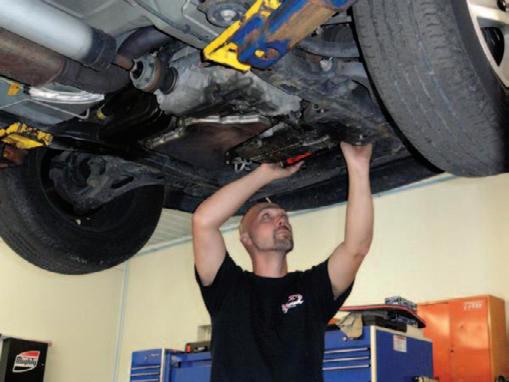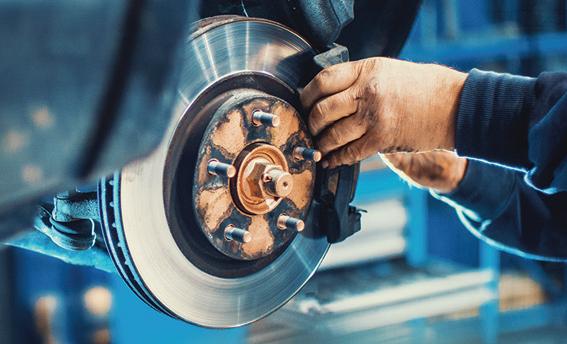
2 minute read
Warning Signs That Brakes Are Faltering
from 04.05.23 issue

Automotive problems are often best left to professionals. Though seasoned car enthusiasts may be capable of diagnosing and fixing car troubles without the assistance of a trusted mechanic, most drivers are better off letting the pros address issues under the hood.
Advertisement



But drivers can still play a vital role in vehicle maintenance. Learning to recognize warning signs of various problems that can affect cars can prevent breakdowns and potentially costly repairs. And in certain instances, such as when the brake system is not working properly, knowing how to spot problems before they escalate into something larger can make drivers and their passengers safer and potentially prevent accidents.
Television shows and movies have lent credence to the notion that brake problems are marked by the sudden cessation of a vehicle’s ability to stop. Though that can happen, warning signs of fading brake systems tend to be more subtle.

• Noises: Much like a knocking sound typically indicates a problem with a vehicle’s airfuel ration mixture, certain noises also suggest there are problems with the brakes. The most noticeable such sign is a highpitched squeal that occurs when drivers apply the brakes. But grinding sounds and noises like scratching and scraping also warrant a visit to a brake specialist.

• Increase in stopping distance: An increase in the distance a vehicle travels before it stops after the brakes are applied indicates that there’s an issue with the brakes. This issue may or may not require a brake replacement. In fact, it’s sometimes indicative that brake fluid levels are low, which can be remedied quickly and easily. However, an increase in stopping distance is significant enough that it should be brought to the attention of a brake specialist immediately.

Did You Know?
• Pulling upon stopping: Another warning sign of brake problems is when the vehicle noticeably pulls to one side as it comes to a stop. This indicates that one side of the brakes is malfunctioning while the other is working properly. Like other issues with brakes, this one requires immediate attention from an automotive professional.

Brake systems should be inspected during routine maintenance visits. But issues with brakes can arise even after such inspections, which underscores how important it is that drivers learn to recognize the warning signs of brake problems.



At the beginning of the COVID19 pandemic, news about the automotive industry focused largely on how consumers were not buying new cars and demand was way down, largely due to people staying home. However, over time, the big news on the automobile front was how semiconductor chip shortages were halting production lines and leading to unprecedented supply shortages — despite record demand. Semiconductor chips are found in laptops and other electronics, including vehicles. These industries have had to cut back on the number of items they produce as a result. In June 2022, Toyota announced it would be cutting its production quota in July by 50,000 units. Intel CEO Pat Gelsinger now expects the semiconductor industry to be impacted by shortages until 2024 due to a lack of manufacturing equipment. Other factors affecting chip production are limited access to purified neon gas, as Ukraine supplies 25 to 35 percent of this gas, as well as a lack of palladium, which is largely supplied by Russia. In addition, air transport costs continue to go up. Semiconductor chips control functions of touchscreens, braking systems, backup cameras, and even airbag deployment systems. Automobiles may even have chips in engines.










